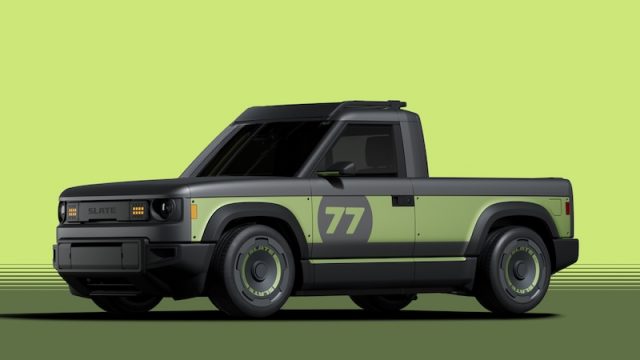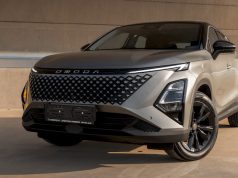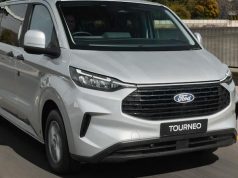The Slate pickup is ready to work, not pose – and it won’t cost you the price of a Sandton townhouse.
A new wave of affordable, radically customisable electric vehicles (EVs) is taking shape in the United States and it could have major implications for emerging EV markets like South Africa. Meet the Slate Truck: a rugged, minimalist EV that promises to shake up conventional thinking about what an electric utility vehicle can be.
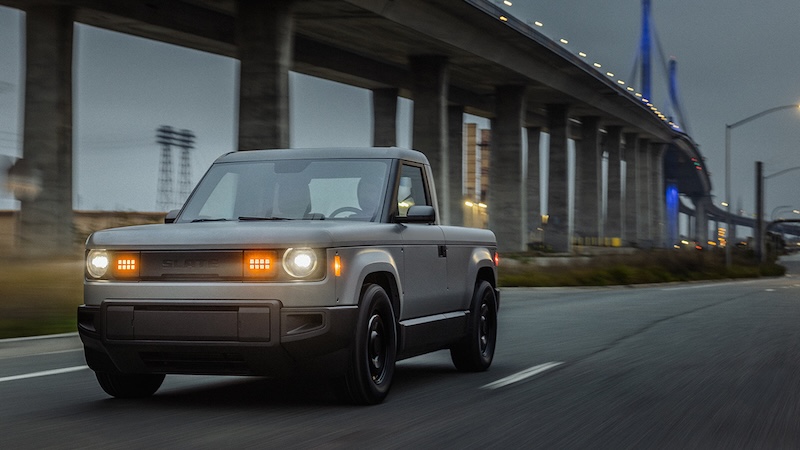
Unveiled by new American startup Slate Auto, the Slate Truck is set to arrive at a base price of under $20 000 (approximately R380 000 at today’s exchange rate) – before taxes and shipping. In a market dominated by increasingly luxurious and pricey EVs, Slate’s back-to-basics approach is refreshingly disruptive.
A modern EV with old-school sensibility
The Slate Truck is designed to be beautifully simple. It ships from the factory in a single two-seat pickup configuration, featuring manual crank windows, steel wheels, aircon knobs, and an expansive frunk (front trunk). No sprawling touchscreens or excessive tech gimmicks – unless you want to add them yourself.
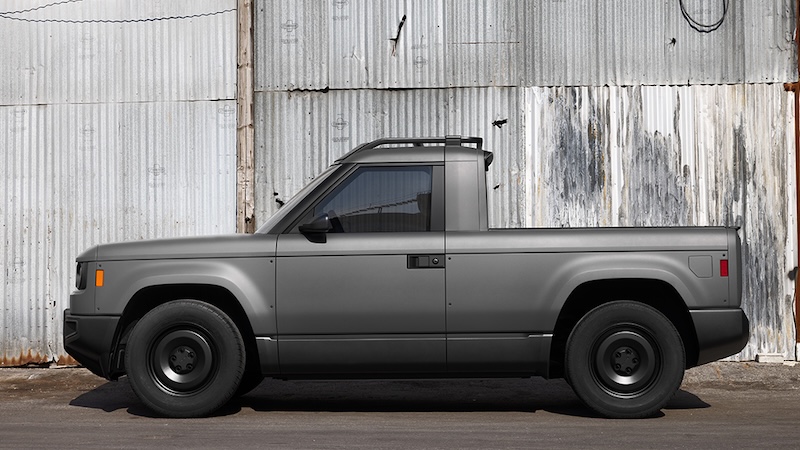
Chris Barman, CEO of Slate Auto, says the aim was to “put the power back in the hands of customers” by creating a blank canvas vehicle. Owners can choose from over 100 DIY accessories, including an SUV conversion kit that transforms the truck into a five-seat family vehicle complete with a roll cage and up to eight airbags.
It’s also designed for easy wrapping: owners can change their pickup’s look as often as they like, making personalisation more affordable and accessible.
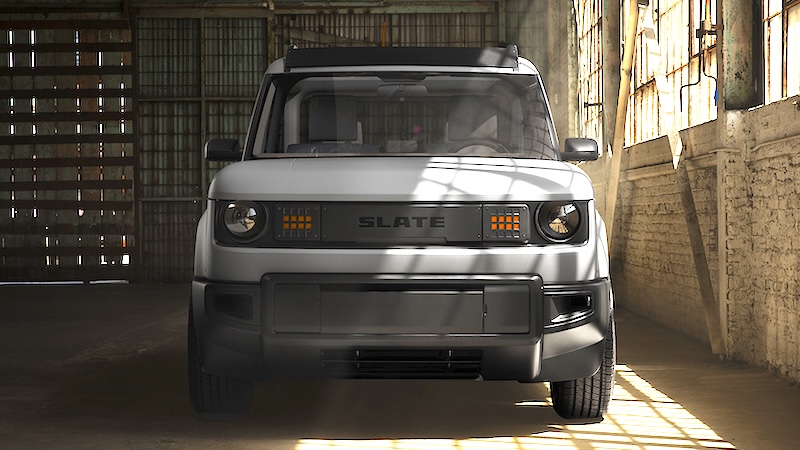
Range, power and performance
Under the skin, the Slate Truck offers respectable real-world performance for its price:
- Standard battery: 52,7 kWh, estimated range of 241 km
- Optional battery: 84,3 kWh, estimated range of 386 km
- Motor output: 150 kW with 264 Nm of torque
- Estimated 0-100 km/h: around 8 seconds
- Top speed: 145 km/h
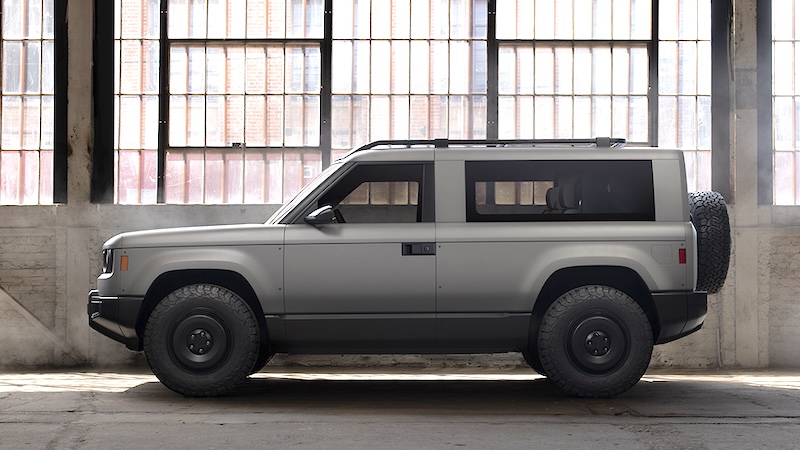
Charging flexibility is another highlight. The truck uses the NACS port (Tesla standard), supporting Level 1, Level 2, and Level 3 DC fast charging. Slate claims it can fast-charge from 20% to 80% in under 30 minutes using a 120-kW charger.
Safety and durability
While designed for simplicity, the Slate Truck doesn’t skimp on safety. Features include Active Emergency Braking, Forward Collision Warning, and up to eight airbags. The company aims to achieve the highest safety ratings available, even in a vehicle designed to be inexpensive and DIY-friendly.

Landed cost for South Africa
If the Slate Truck were to come to South Africa, a rough landed price calculation could look like this:
- Base price: R380 000 (exchange rate at $1 = R19)
- Shipping and logistics: approximately R50 000–R70 000
- Import duties and taxes: around 25–30% (estimated R100 000–R130 000)
- Total estimated landed price: around R530 000–R580 000
- At that price, the Slate would seriously undercut other EVs like the Volvo EX30 and many combustion bakkies and compact SUVs.
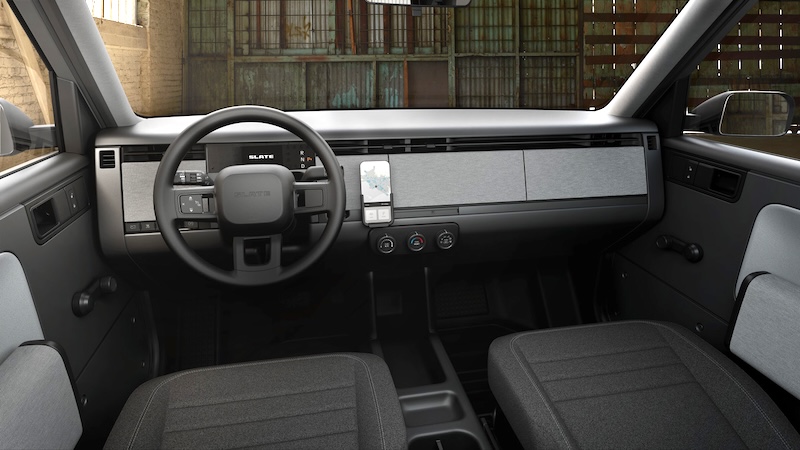
A bold business model
Slate Auto is also dismissing the traditional dealer model. Vehicles will be sold direct-to-consumer online, with deliveries and service support handled through a nationwide service network in the US.
InsideEVs reports that this model is increasingly popular among new EV brands and could offer cost savings to buyers.
Production is expected to begin later in 2025 at Slate’s reindustrialised factory in the US.

Would South Africans bite?
The idea of an affordable, customisable, durable EV is highly attractive for the South African market, particularly for small businesses, farmers, and commuters.
If Slate can achieve scale and launch international distribution, the Slate Truck could find a loyal following here, especially among buyers who value rugged practicality over flashy tech.
For now, reservations are open via slate.auto with a refundable $50 deposit.
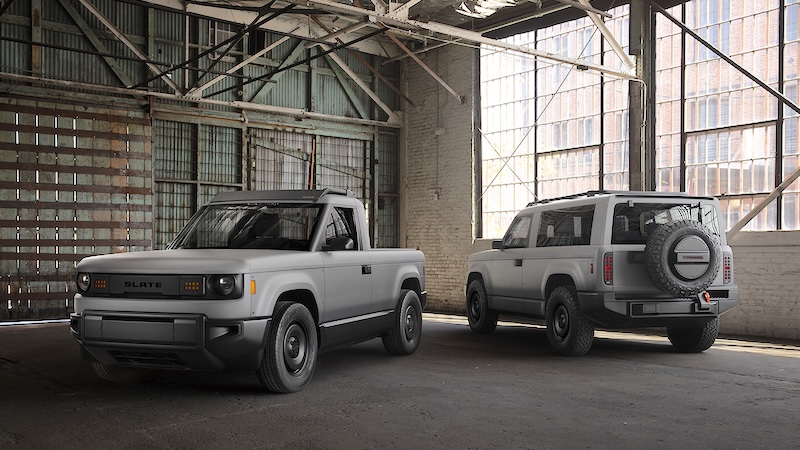
Specifications of the Slate pickup
Dimensions
- Length: 4 434 mm
- Wheelbase: 2 766 mm
- Width (without mirrors): 1 793 mm
- Height: 1 761 mm
- Frunk: 198 litres
- Bed: 1 047 litres
- Width between wheel wells: 1 090 mm
- Bed width (minimum/maximum): 1 270 mm / 1 395 mm
- Bed length (tailgate closed/open): 1 524 mm / 2 073 mm
Weights and capacities
- Kerb weight: 1 634 kg
- Maximum payload: 650 kg
- Maximum towing capacity: 454 kg
Power and propulsion
- Motor type: Single motor, rear-wheel drive
- Onboard charger: 11 kW
- Standard battery: 52,7 kWh, estimated range of 241 km
- Optional battery: 84,3 kWh, estimated range of 386 km
- Motor output: 150 kW with 264 Nm of torque
- Estimated 0-100 km/h: around 8 seconds
- Top speed: 145 km/h
Charging times
- Level 1 AC (3.6 kW, 20–100%): 11 hours
- Level 2 AC (11 kW, 20–100%): Under 5 hours
- Level 3 DC fast charge (120 kW, 20–80%): Under 30 minutes
Chassis and suspension
- Front suspension: MacPherson strut
- Rear suspension: De Dion axle with coil springs
- Wheels and tyres: 17” x 7” steel wheels, 245/65R17 tyres
- Tyre diameter: 750 mm
Other features
- Safety systems: Active Emergency Braking, Forward Collision Warning, up to 8 airbags
- Vehicle design: Permanent magnet synchronous motor with hairpin winding, combined water and oil cooling, single-speed gearbox (12,44 ratio)


